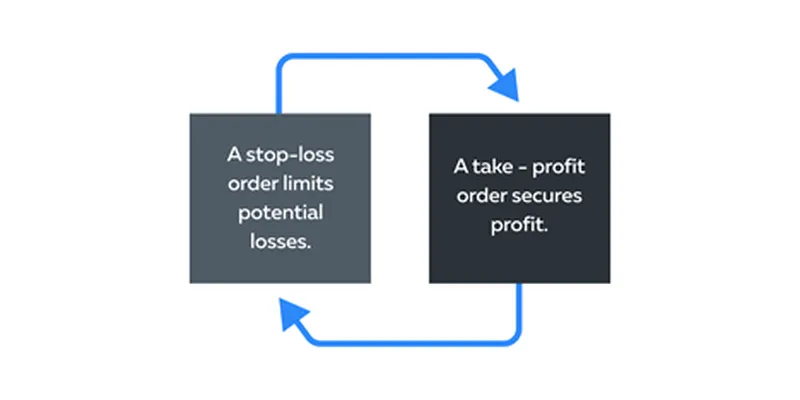20% Off Just for Blog Readers — Until July 31.
Use code BLOG20-JULY for 20% off your first month of Bookmap Only valid through July 31.
Trading Basics
January 10, 2024
SHARE
Trading Terms Explained: From Bulls and Bears to Pips and Lots
Do you want to learn how the financial markets work? Imagine stepping into a lively market where bulls and bears are in action.
Still puzzled?
Through this article, we will demystify the lingo of ‘bulls’ and ‘bears’ and explain all the relevant terms from pips, and lots, to orders in relation to the financial markets. We’ll also break down the usage of strategies like leveraging or protecting money with stop-loss and take-profit orders. Whether you’re a newbie or a bit of a veteran, this article is for you. Let’s get started!
Decoding Market Dynamics: Bulls and Bears
To form profitable trading strategies, it is pertinent to understand the market dynamics. In the context of trading, bulls and bears, are symbols representing thriving and declining markets respectively. Let’s delve deeper.
What is a Bull Market?
A bull market is a market condition where investors (bulls) are optimistic and confident about the future, resulting in increased buying activity and rising stock prices. The term comes from the image of a bull attacking upwards with its horns, symbolizing the strength and momentum of the market. Traders can spot a bull market through the following indicators:
- Stock Price Increases: Bull markets are characterized by a sustained rise in stock prices across various sectors.
- High Company Earnings Reports: Companies tend to report strong earnings during bull markets, reflecting a robust business environment.
- Strong Economic Indicators: These positive economic indicators are associated with a bull market:
- Low unemployment rates
- High consumer confidence
- Overall economic growth
For Example,
During the period following a significant economic stimulus, a bull market may emerge. The injection of capital into the economy boosts investor confidence and leads to:
- Increased buying activity
- A positive outlook for the market.
What is a Bear Market?
A bear market is a market condition where the prices are falling or expected to fall, and where pessimism and caution prevail among investors. The term “bear market” is derived from the image of a bear swiping its paws downward. Traders can spot the bear market through the following signals:
- Widespread Pessimism:
- In a bear market, there is a prevailing negative sentiment.
- Investors become increasingly cautious about the future.
- Decrease in Investor Spending:
- Investors tend to pull back from the market
- Such an action leads to decreased buying activity and, in some cases, selling off of assets.
- Rising Unemployment Rates:
- Economic challenges during a bear market result in higher unemployment rates.
- This surge further contributes to the negative outlook.
For Example,
During a recessionary period, a bear market often takes hold. Traders and investors witness:
- Economic contractions
- Reduced consumer spending
- Lack of confidence in the market, and
- A sustained period of declining stock prices.
Navigating Trade Mechanics: Pips, Lots, and Orders

To grasp the essentials of how trading works, traders must have a strong foundational knowledge. Let’s break down Pips, Lots, and Orders in a simple and easy-to-understand way.
What is a Pip?
A “pip” stands for “percentage in point” or “price interest point”. It represents the smallest price move that a given exchange rate can make based on market convention. In forex trading, pips are crucial for:
- Measuring price movements and
- Determining profits or losses.
How are Pips Used in Forex Trading?
- Pips are often used to express the change in value between two currencies.
- In forex pairs, the fourth decimal place denotes a pip.
- However, in currency pairs involving the Japanese Yen, a pip is denoted by the second decimal place.
Let’s understand better through an example.
- Assume that the EUR/USD currency pair moves from 1.1200 to 1.1205.
- This shows that the pair has moved 5 pips.
To calculate the value of one pip in a standard lot for EUR/USD, where a standard lot is typically 100,000 units of the base currency, you would multiply the pip value by the lot size. If one pip is $10 for a standard lot, a 5-pip movement would result in a $50 change in value.
What are Lots?
In forex trading, a “lot” refers to a standardized quantity of a financial instrument. This quantity is often known as “lot sizes” which comes in three main categories:
| Lots | Micro Lot | Mini Lot | Standard Lot |
| Units of the Base Currency | 1,000 | 10,000 | 100,000 |
Let’s understand better through an example:
- Consider trading the EUR/USD pair with a standard lot.
- If the pair moves 100 pips, and the pip value is $10, the change in value would be $1,000.
- Similarly, the same movement with:
- A mini lot would result in a $100 change, and
- A micro lot would result in a $10 change.
What are Orders?
While trading, you can place different types of orders. These are:
| Order Types | Meaning |
| Market Orders |
|
| Limit Orders |
|
| Stop Orders |
|
Understand this better through a hypothetical example:
- Suppose the current market price of an asset is $100.
- To take advantage of a potential dip, a trader places a limit order to buy the asset at $90.
- If the price reaches $90, the order is executed.
- This provides a buying opportunity at a 10% lower price.
Volume and Volatility: Indicators of Market Activity
Volume in the financial markets refers to the total number of shares or contracts traded within a specific time period. It is a key indicator of market activity and provides valuable insights into the strength and sustainability of price movements. To gain competitive edge, traders can use advanced market analysis tools like Bookmap, which provide real-time visualization of volume.
How Relevant Is Volume in Confirming Trends?
Volume is often used to confirm the validity of price trends. By studying the combination of volume level and type of trend, a trader is able to interpret the kind of interest prevailing in the market. Read the table below:
| Level of Volume | Type of Trend | Type of Interest |
| Increase | Uptrend | Strong Buying Interest |
| Increase | Downtrend | Strong Selling Pressure |
Hypothetical example:
- Suppose a company releases positive earnings reports.
- If the stock experiences a significant increase in trading volume following this event, it suggests:
- Strong investor interest and
- Support for the upward price movement.
- On the other hand, a decrease in volume during a price uptrend signals potential weakness in the trend.
What is Volatility?
Volatility measures the degree of variation in the price of a financial instrument over time. It reflects the level of uncertainty or risk in the market and is crucial for assessing potential price fluctuations. There are several instances when financial markets experience increased volatility. Some notable times can be understood from the table below:
| Volatility Times | Meaning | Cause |
| Market Opening | Volatility often spikes at the beginning of a trading day. | This happens as traders react to overnight news and events. |
| News Impact | Significant news releases, such as economic reports or corporate announcements, can lead to increased volatility. | This happens as market participants adjust their positions based on new information. |
For Example,
- Consider a scenario where a major economic indicator is released.
- This causes a surge in volatility as traders:
- Quickly reassess their positions and
- React to the new information.
- Similarly, during the market opening,
- The market witnesses an influx of orders.
- This happens as traders react to overnight developments that contribute to heightened volatility.
The Edge with Leverage and Margin

Understanding the risks and rewards associated with leverage and margin is crucial for traders. While leverage provides an opportunity to amplify gains, it also increases the likelihood of significant losses. Let’s delve deeper.
What is Leverage?
Leverage allows traders to control a larger position size in the market with a smaller amount of capital. It involves borrowing funds to increase the size of a trade and magnify both potential profits and losses. Let’s gain a better understanding through an example:
Consider a trader with $1,000 and access to different leverage levels. Read the table below:
| Leverage | Total Position Size | Potential Profit/Loss
(1% price change) |
| 10:1 | $10,000 | $100 |
| 50:1 | $50,000 | $500 |
| 100:1 | $100,000 | $1,000 |
Observation:
It can be noted from the above example that if the trader expects a 1% price change in the trade’s favor, the potential profit is magnified based on the chosen leverage level.
What is Margin?
Margin is the initial investment required to open and maintain a leveraged position. It represents a percentage of the total position size. The rest of the position is covered by borrowed funds.
For example,
- Suppose a trader opens a leveraged position with:
- A total size of $10,000 and
- The margin requirement of 5%
- The trader’s own capital would be $500 (5% of $10,000)
- The remaining capital amounting to $9,500 is borrowed.
What is the Scenario of a Margin Call?
- If the trade moves against the trader, losses reduce the account equity.
- When the account equity falls below a certain level (maintenance margin), a margin call is triggered.
- In a margin call, the broker may
- Demand additional funds to cover potential losses or
- Automatically close the position.
What are the Implications of Margin on a Trader’s Portfolio?
Margin trading allows for increased exposure and potential profits, but it also involves higher risk. A margin call can lead to the closure of positions at a loss, potentially wiping out the trader’s initial capital.
Essentials of Risk Management: Protecting Your Investments
To effectively manage trading risk, traders must implement stop-loss and take-profit orders, along with hedging strategies. These tools help traders to:
- Safeguard their investments,
- Manage losses,
- Secure profits in the dynamic and unpredictable financial markets.
What are Stop-Loss and Take-Profit Orders?

Stop-Loss Order:
A stop-loss order is used to limit potential losses by automatically selling an asset when its price reaches a specified level. Traders can set up stop-loss orders in the following manner:
- Identify a critical support level or a level where your risk tolerance suggests cutting losses.
- Place a sell-stop order slightly below this level to allow for minor price fluctuations.
- The order will be triggered if the market reaches or goes below the specified price, limiting potential losses.
Take-Profit Order:
A take-profit order is used to secure profits by automatically selling an asset when its price reaches a predetermined level. Traders can set up a take-profit order in the following manner:
- Identify a resistance level or a target price based on your trading strategy.
- Place a sell-limit order slightly below this level to ensure execution.
- The order will be triggered when the market reaches or surpasses the specified price, securing profits.
What is Hedging?
Hedging is a risk management strategy used to protect against adverse price movements in the market. It mitigates risk by offsetting potential losses in one position with gains in another. Traders perform simple hedging using these techniques:
- Options Hedging: This involves acquiring put options to counterbalance potential losses in a stock position.
- Counteractive Position: Traders open a position in a correlated asset that moves inversely to the original position, serving as a hedge against market fluctuations.
Let’s understand hedging better through a hypothetical example.
- Scenario: A trader currently possesses a stock position. Their objective is to hedge against potential downside risks.
Possible Actions and Results:
- 1. Action Performed: Purchase “put” options
- Right Gained: This action grants the trader the right to sell the stock at a predetermined price, offering a protective measure against potential losses.
- Action Performed: Open a “short position” in an asset that tends to move inversely to the stock
- Right Gained: This strategy provides a counteractive hedge for the trader. By taking a short position in an asset that typically moves in the opposite direction to the stock, the trader aims to offset potential losses in the stock position, thereby enhancing risk management.
Conclusion
The world of financial markets is full of key terms and concepts that shape trading and investment strategies. Through this article, we explored essential terms such as bull and bear markets, pips, lots, orders, volume, volatility, leverage, margin, stop-loss, take-profit orders, and hedging. These terms form the foundation of a trader’s knowledge and are crucial for making informed decisions and managing risk.
The key to achieving success in trading is maintaining a consistent focus on market trends, delving into economic indicators, and refining one’s technical analysis skills. Now that you have familiarized yourself with the lingo, it’s time to see the practical application.
Dive into the specifics of when and how to place different types of orders with our guide, Order Types: The Basics. Whether you’re making your first trade or refining your strategic approach, mastering the fundamentals of order types is a crucial milestone in your trading journey. This resource will provide you with valuable insights and knowledge to navigate the complexities of the trading landscape with confidence.
